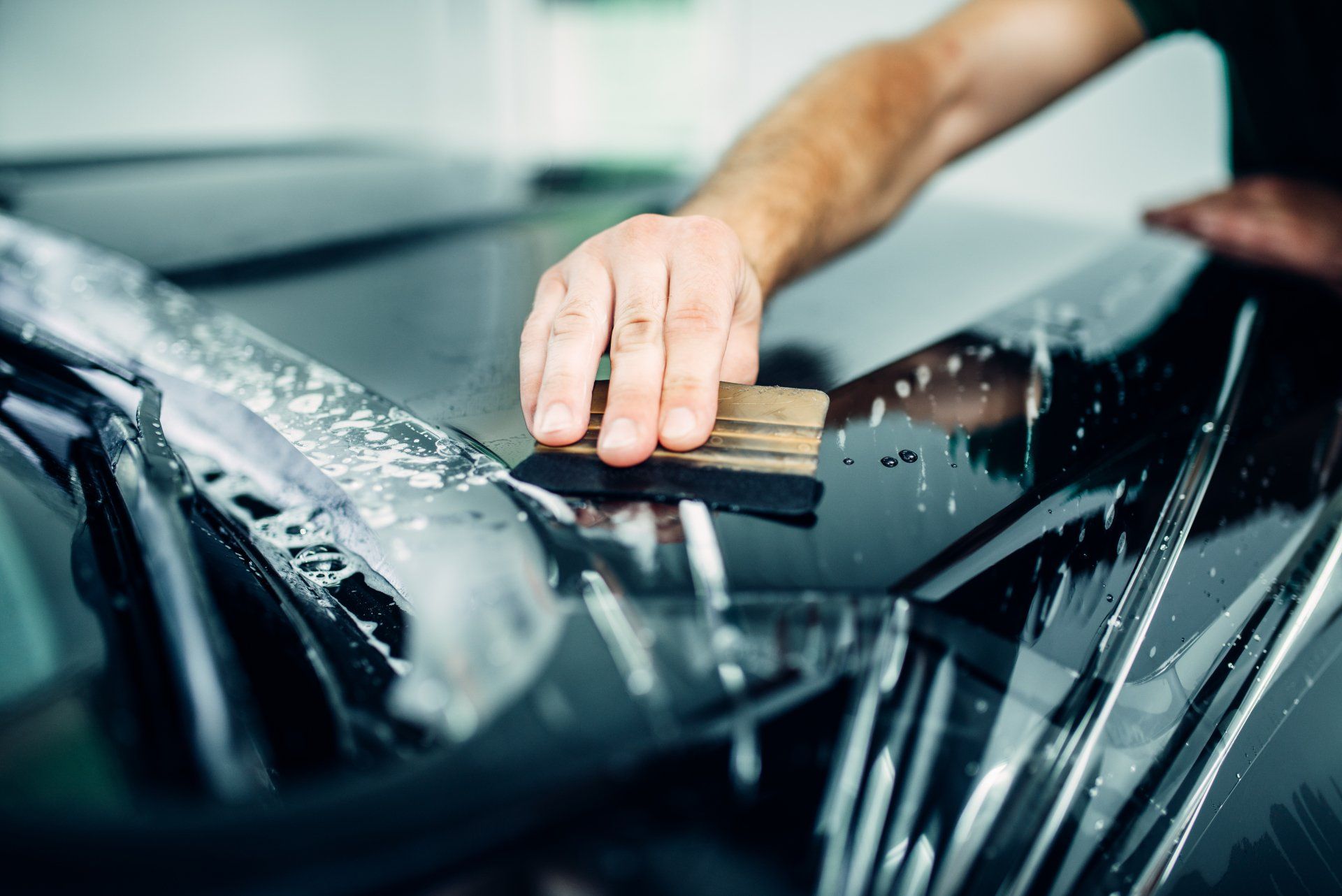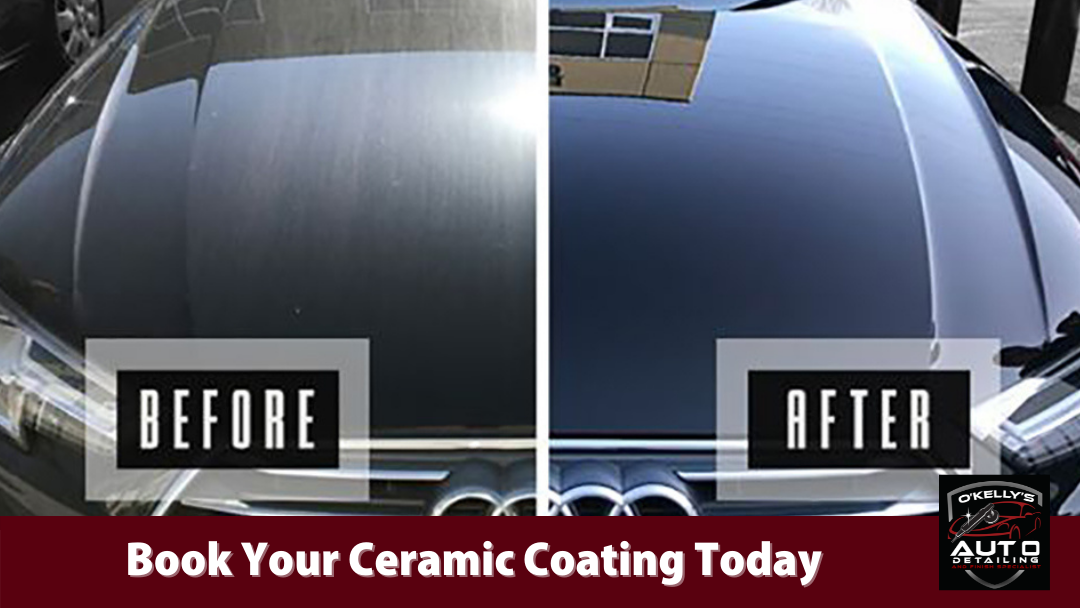Ceramic Covering vs. Standard Wax: Which Provides Better Long-Term Security?
The discussion between ceramic finishings and conventional wax for car protection has actually garnered significant focus amongst auto fanatics and experts alike. Ceramic finishings boast premium longevity and resistance to ecological elements, yet the complexity of their application increases concerns regarding availability and practicality.
Review of Ceramic Finish
Ceramic finishing has actually obtained substantial appeal amongst automobile fanatics and detailers alike because of its advanced safety high qualities. This cutting-edge innovation is created to create a sturdy, hydrophobic shield over a lorry's paint surface, significantly boosting its resistance to environmental pollutants such as dust, UV rays, and chemical discolorations. Unlike standard wax, which provides a temporary layer of protection, ceramic layers bond at a molecular degree with the paint, using durable sturdiness-- often extending past 2 years with proper maintenance.
The application procedure includes thorough prep work of the vehicle's surface, including cleansing and brightening to make certain optimal attachment. When used, the coating cures to develop a durable layer that not just adds depth and gloss to the paint but likewise streamlines upkeep. With its hydrophobic residential or commercial properties, ceramic finishing allows water and dirt to move off more quickly, reducing the frequency of washes and reducing the danger of swirl marks.
Moreover, ceramic coverings are offered in different formulas, permitting customers to choose products tailored to their certain requirements and preferences. In general, ceramic coating represents a significant improvement in paint security technology, supplying superior efficiency contrasted to conventional choices.
Overview of Traditional Wax
Commonly pertained to as a staple in automotive care, wax works as a preferred selection for those seeking a straightforward approach to boost and protect their lorry's paint - ceramic coating. Automotive wax typically comprises all-natural components, such as carnauba, or artificial substances, made to create a safety layer externally of the paint. This layer not only enhances the automobile's gloss and shine but likewise gives an obstacle versus ecological impurities
The application of wax is generally easy to use, making it accessible for both experts and DIY lovers. Once used, wax needs a healing period, after which it sets to form a protective covering.
Nonetheless, while wax is effective for improving the aesthetic appeal of a car, it is necessary to note that the defense it offers might necessitate a lot more regular reapplication compared to alternative products, such as ceramic coatings. Overall, traditional wax stays a preferred alternative for those focusing on simplicity of usage and prompt aesthetic renovation.
Toughness and Long Life Comparison
While both ceramic finishes and traditional wax deal protective advantages for automobile paint, their longevity and durability differ substantially. Standard wax, generally made from all-natural carnauba or artificial polymers, typically provides a protective layer that lasts about 3 to 6 months. This relatively short lifespan necessitates regular reapplication to preserve ideal protection.
In contrast, ceramic layers are crafted from advanced nanotechnology, creating a covalent bond with the paint surface area. This leads to a robust, hydrophobic layer that can withstand for two to 5 years, depending on the item and environmental conditions. The superior toughness of ceramic coverings is attributed to their chemical framework, which provides boosted resistance to scratches, UV rays, and oxidation.

Defense Versus Ecological Factors
Safeguarding a lorry's paint from environmental elements is crucial for preserving its look and worth with time. Vehicles are frequently subjected to a range of aspects, consisting of UV rays, bird droppings, tree sap, acid rain, and roadway grime, every one of which can jeopardize the stability of the paintwork.
Ceramic finishings offer a robust defense versus these environmental aggressors. Unlike standard wax, which can deteriorate rapidly under UV exposure, ceramic finishes create a durable, hydrophobic layer that withstands the damaging impacts of sunshine and toxic wastes. This advanced modern technology develops a chemical bond with the vehicle's surface, using premium security that lasts for several years, even in severe problems.
Standard wax, while less complicated to apply, usually calls for frequent reapplication and provides minimal resistance to impurities and UV rays. In time, it can damage down, leaving the paint susceptible to scrapes and oxidation. On the other hand, ceramic coverings keep their safety qualities much longer, significantly reducing the risk of paint damages and guaranteeing that the car retains its aesthetic appeal. As a result, ceramic coverings are progressively acknowledged as the exceptional choice for lasting defense against environmental aspects.
Application and Upkeep Differences
The techniques of application and home subsequent upkeep for ceramic layers and conventional wax vary considerably, influencing the total customer experience and effectiveness of each item. Ceramic finishings call for a more detailed application process, usually including surface prep work that includes washing, decontaminating, and brightening the automobile. As soon as the surface area is all set, the ceramic finishing is used in a controlled atmosphere, typically requiring expert experience to make certain proper curing and bonding to the paint.

While both products improve lorry appearance, the longer-lasting security used by ceramic finishings may justify their first investment, despite the more requiring application procedure. Conversely, conventional wax remains a prominent option for those seeking a simpler, albeit short-term, option.

Final Thought
To conclude, ceramic layers show substantial advantages over conventional wax in regards to toughness and environmental management. With a life-span expanding two to five years and premium resistance to UV rays, dirt, and chemical stains, ceramic coverings provide a more reliable service for long-lasting vehicle upkeep. Although the application procedure may call for expert competence, the resulting cost financial savings and reduced regularity of reapplication underscore the worth of ceramic finishings for those looking for optimal car protection.
The dispute in between ceramic coatings and traditional wax for lorry protection has amassed substantial interest amongst auto fanatics and specialists alike. Unlike conventional wax, which provides a momentary layer of security, ceramic finishes bond at a molecular level with the paint, using long-lasting sturdiness-- frequently extending beyond 2 years with correct maintenance.
While both ceramic finishings and conventional wax offer safety advantages for automotive paint, their longevity and longevity vary considerably. For cars and truck enthusiasts seeking long-term protection, ceramic layers offer a compelling benefit over standard wax products.
In conclusion, ceramic layers show considerable advantages over traditional wax in terms of resilience and ecological protection.
Comments on “Ceramic Coating vs Traditional Wax: Which Offers Better Protection?”